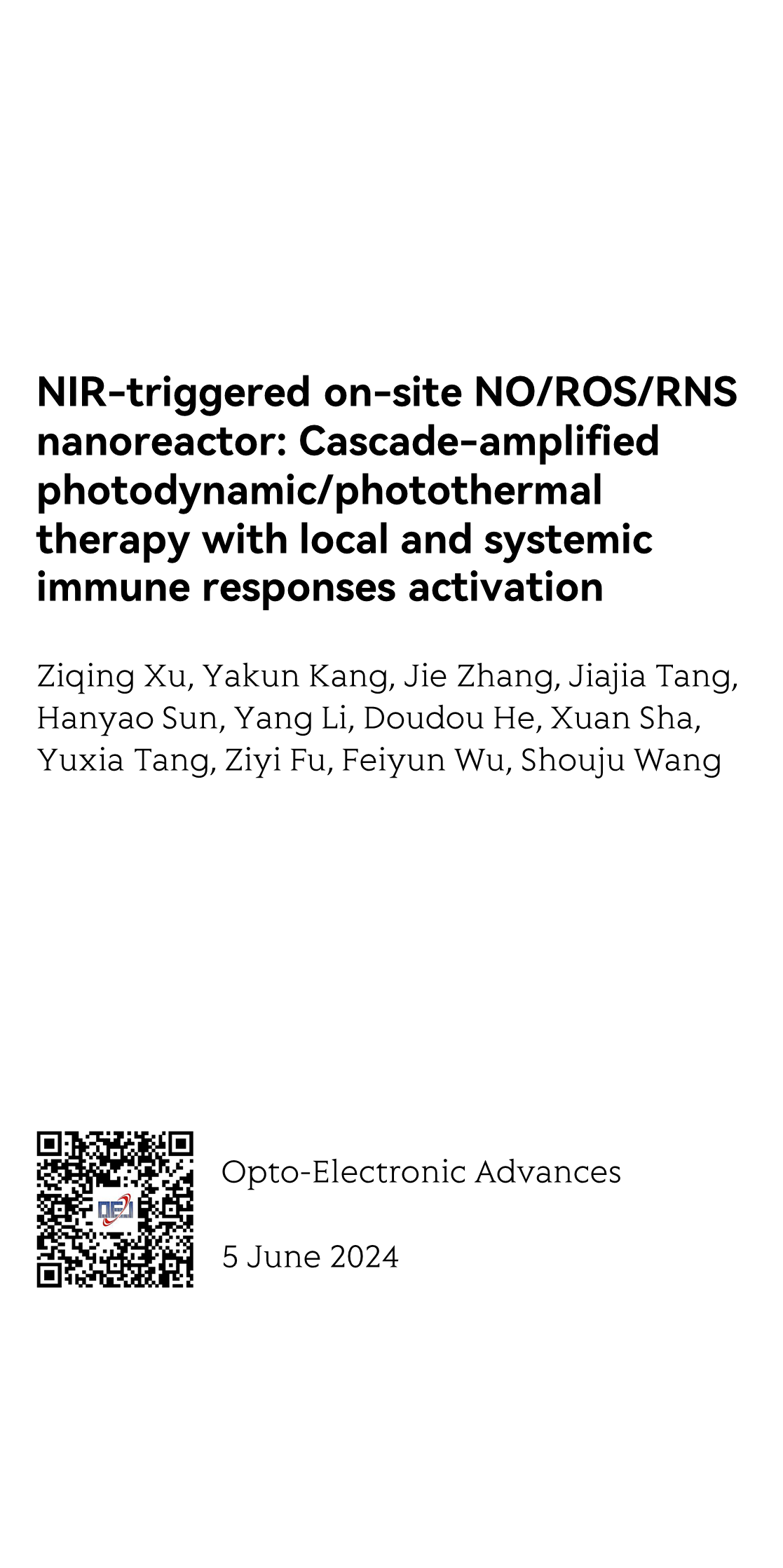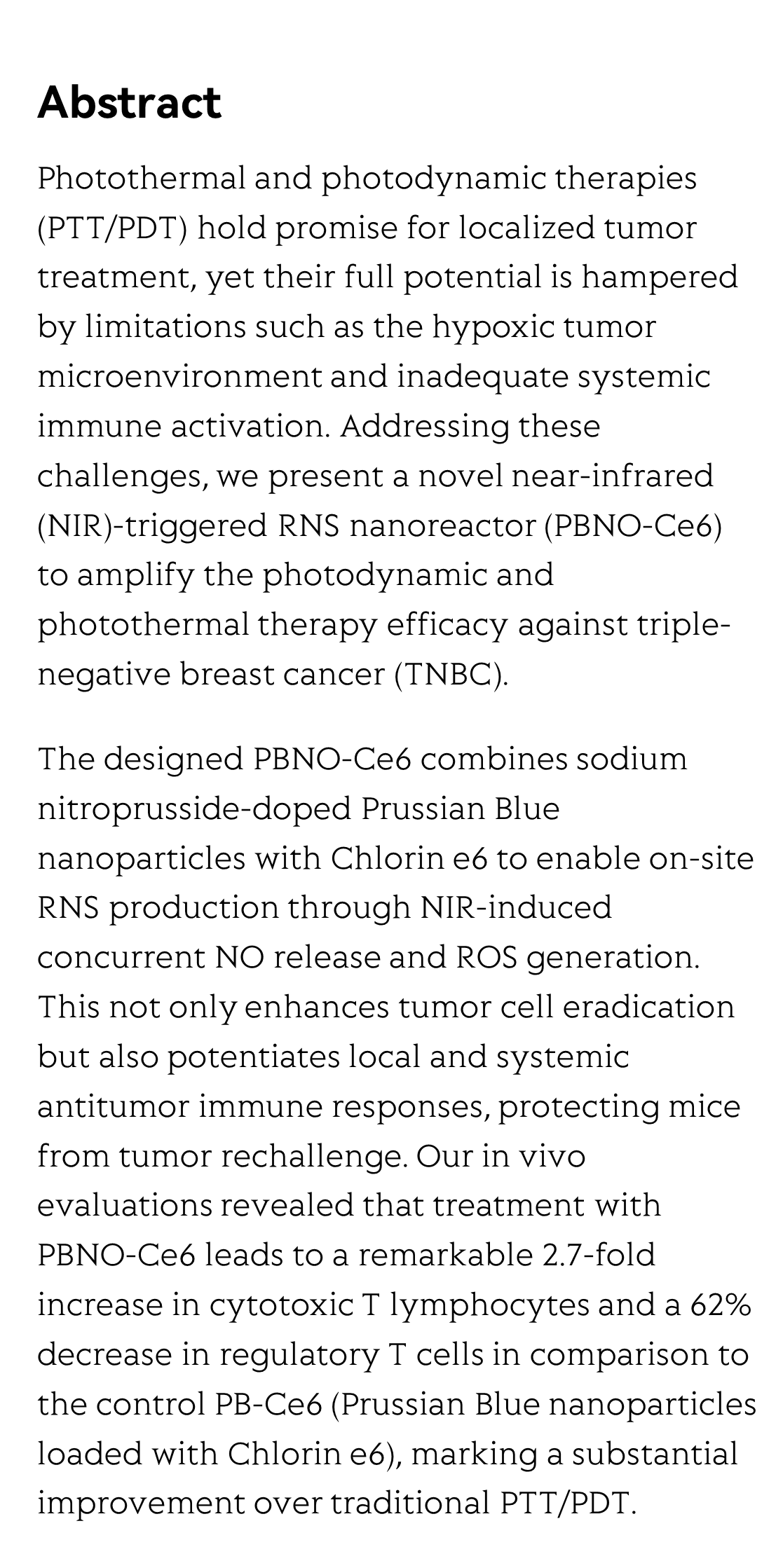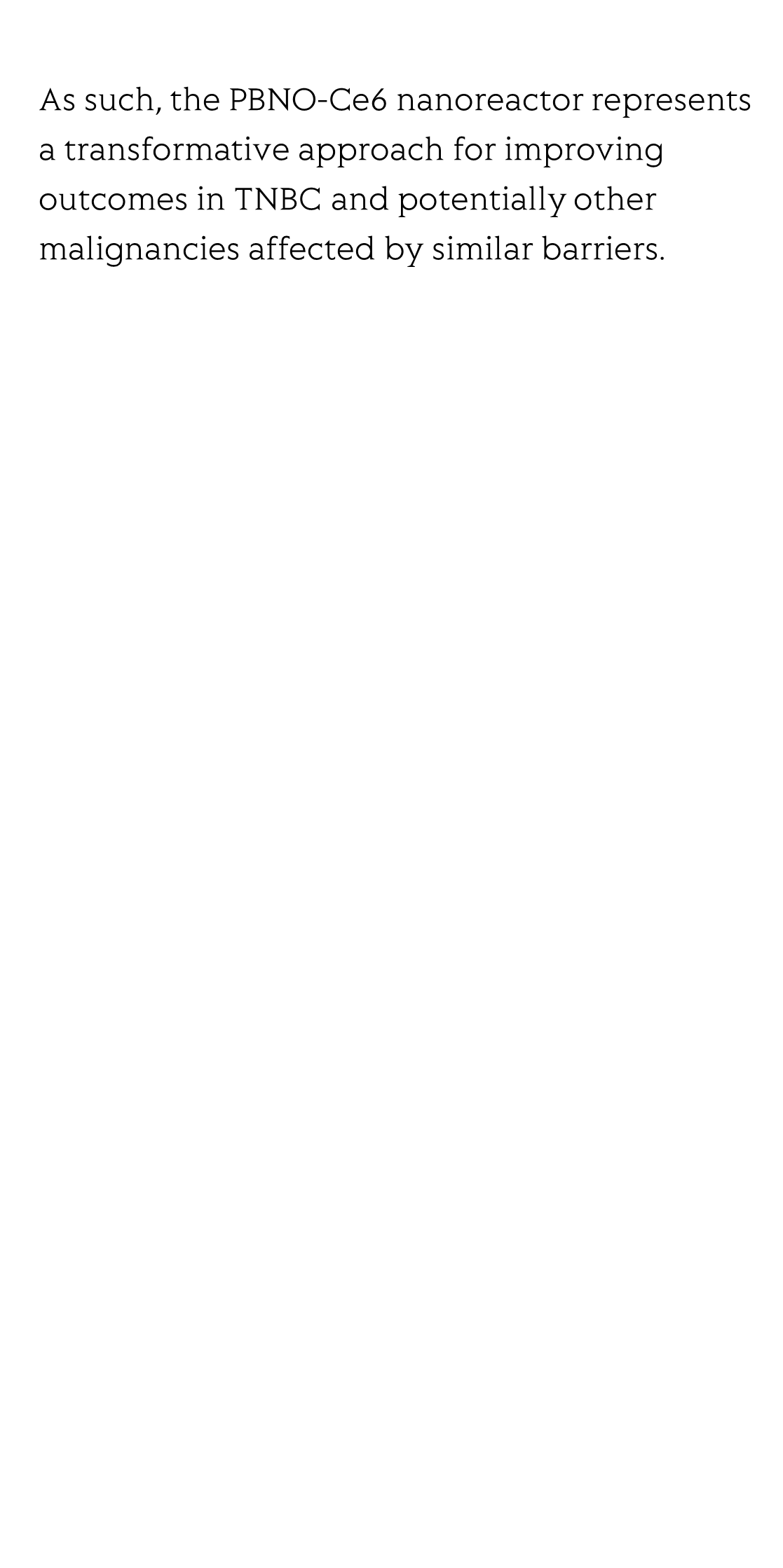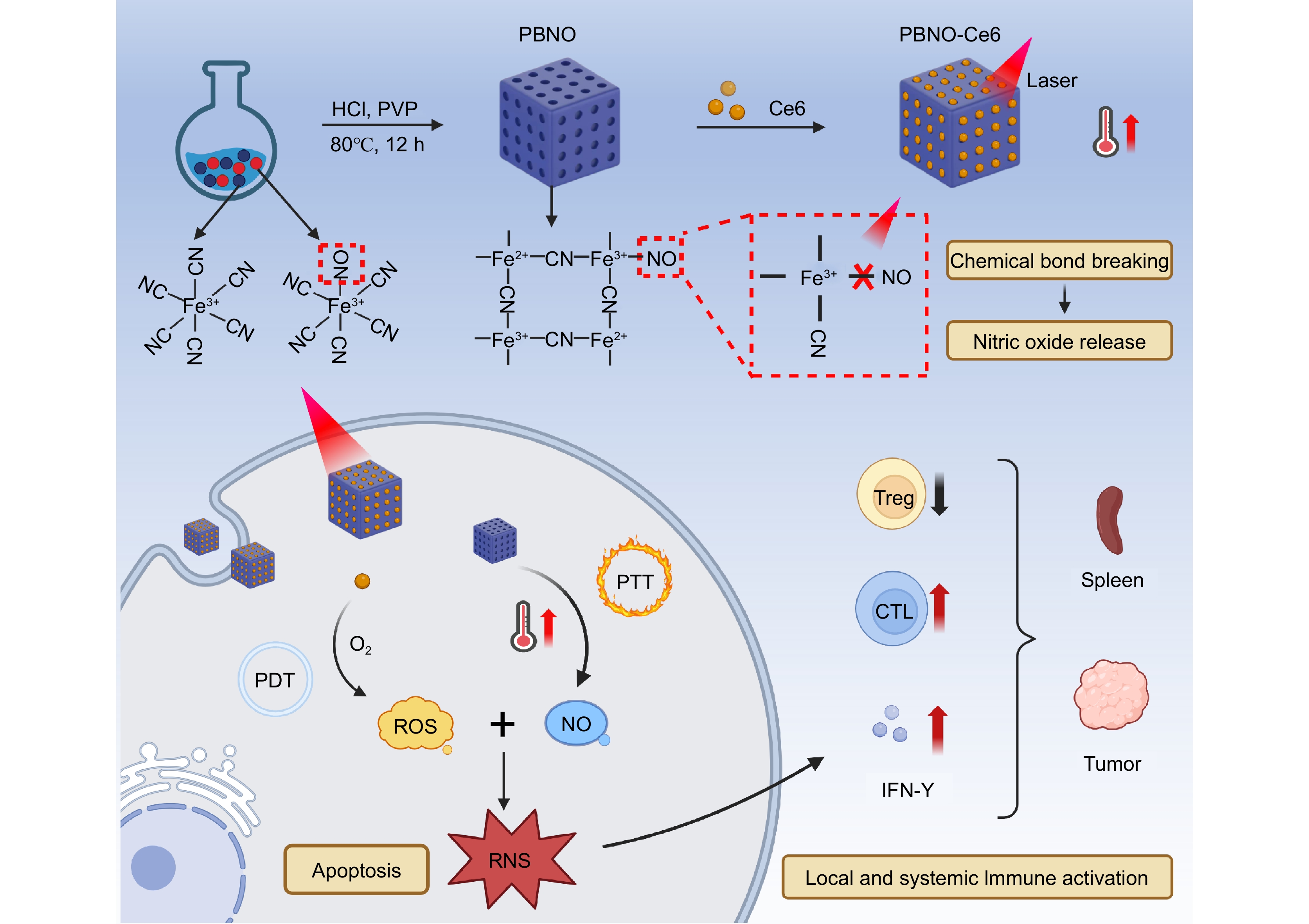(Peer-Reviewed) NIR-triggered on-site NO/ROS/RNS nanoreactor: Cascade-amplified photodynamic/photothermal therapy with local and systemic immune responses activation
Ziqing Xu 徐子晴 ¹, Yakun Kang 康亚坤 ², Jie Zhang 张洁 ¹, Jiajia Tang 汤佳佳 ¹, Hanyao Sun 孙汉垚 ¹, Yang Li 李阳 ¹, Doudou He 何豆豆 ¹, Xuan Sha 沙萱 ¹, Yuxia Tang 唐玉霞 ¹, Ziyi Fu 付子毅 ³, Feiyun Wu 吴飞云 ¹, Shouju Wang 王守巨 ¹
¹ Laboratory of Molecular Imaging, Department of Radiology, The First Affiliated Hospital of Nanjing Medical University, Nanjing 210029, China
中国 南京 南京医科大学第一附属医院 放射科 分子影像实验室
² Department of Breast Surgery, The First Affiliated Hospital of Nanjing Medical University, Nanjing 210029, China
中国 南京 南京医科大学第一附属医院 乳腺外科
³ Department of Women & Children Research Center, The First Affiliated Hospital, Nanjing Medical University, Nanjing 210029, China
中国 南京 南京医科大学第一附属医院 妇幼中心实验室
Opto-Electronic Advances
, 2024-06-05
Abstract
Photothermal and photodynamic therapies (PTT/PDT) hold promise for localized tumor treatment, yet their full potential is hampered by limitations such as the hypoxic tumor microenvironment and inadequate systemic immune activation. Addressing these challenges, we present a novel near-infrared (NIR)-triggered RNS nanoreactor (PBNO-Ce6) to amplify the photodynamic and photothermal therapy efficacy against triple-negative breast cancer (TNBC).
The designed PBNO-Ce6 combines sodium nitroprusside-doped Prussian Blue nanoparticles with Chlorin e6 to enable on-site RNS production through NIR-induced concurrent NO release and ROS generation. This not only enhances tumor cell eradication but also potentiates local and systemic antitumor immune responses, protecting mice from tumor rechallenge. Our in vivo evaluations revealed that treatment with PBNO-Ce6 leads to a remarkable 2.7-fold increase in cytotoxic T lymphocytes and a 62% decrease in regulatory T cells in comparison to the control PB-Ce6 (Prussian Blue nanoparticles loaded with Chlorin e6), marking a substantial improvement over traditional PTT/PDT.
As such, the PBNO-Ce6 nanoreactor represents a transformative approach for improving outcomes in TNBC and potentially other malignancies affected by similar barriers.
Flicker minimization in power-saving displays enabled by measurement of difference in flexoelectric coefficients and displacement-current in positive dielectric anisotropy liquid crystals
Junho Jung, HaYoung Jung, GyuRi Choi, HanByeol Park, Sun-Mi Park, Ki-Sun Kwon, Heui-Seok Jin, Dong-Jin Lee, Hoon Jeong, JeongKi Park, Byeong Koo Kim, Seung Hee Lee, MinSu Kim
Opto-Electronic Advances
2025-09-25
Dual-frequency angular-multiplexed fringe projection profilometry with deep learning: breaking hardware limits for ultra-high-speed 3D imaging
Wenwu Chen, Yifan Liu, Shijie Feng, Wei Yin, Jiaming Qian, Yixuan Li, Hang Zhang, Maciej Trusiak, Malgorzata Kujawinska, Qian Chen, Chao Zuo
Opto-Electronic Advances
2025-09-25







